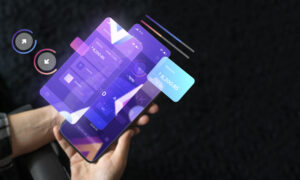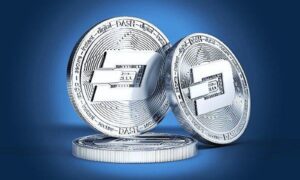In today’s rapidly-paced world, the pursuit of convenience reigns supreme. When it comes to financial transactions, contactless payment options have ascended to the throne. The days of rummaging for cash or swiping cards have given way to the ease of tapping for financial transactions. Amid the plethora of contactless payment forms, navigating this digital landscape can be bewildering. This article aims to illuminate the universe of contactless transactions, demystifying everything from cards to mobile applications.
Decoding Contactless Payment
Contactless payment signifies a transaction devoid of physical interaction between payer and payee. Instead, the two parties are seamlessly linked through wireless means, primarily utilizing Near-Field Communication (NFC) technology. This mode of payment has surged in popularity, offering a convenient and secure substitute for traditional mediums like cash and checks.
Several avenues facilitate contactless payments. Predominantly, this is accomplished through smartphones or other mobile devices. During a transaction, the customer merely positions their device close to the NFC reader at the point of sale, culminating in a seamless payment sans card swiping or insertion. Another avenue involves dedicated contactless payment cards, often resembling credit or debit cards but equipped with an integrated NFC chip. These cards can be employed akin to standard cards at any NFC-enabled terminal.
Security underpins contactless payments, bolstered by encryption and multi-tier protective measures. However, it is imperative to acknowledge that the risk of fraud persists in any financial transaction. Prior to embracing contactless payment modes, individuals apprehensive about security should consult their bank or card issuer to ascertain the safeguards in place.
Varieties of Contactless Payments
Contactless payments are categorized into four primary types: NFC (Near Field Communication), QR codes, BLE (Bluetooth Low Energy), and RFID (Radio Frequency Identification).
NFC emerges as the most prevalent form of contactless payment, exemplified by Apple Pay and Android Pay. This entails holding a smartphone near a specialized reader at the checkout counter. The reader typically emits a sound or vibration to signal the successful completion of the transaction.
QR code payments involve scanning a QR code using a mobile device. This can be achieved through the Wallet app or dedicated QR code scanner applications. Subsequent to scanning the QR code, the user typically needs to input their PIN or validate the payment through alternative means before the transaction is processed.
BLE payments hinge on Bluetooth Low Energy. While less pervasive than NFC, this technology finds application in select retail environments. A BLE payment necessitates pairing the phone with the payment terminal, enabling the completion of purchases by placing the device close to the terminal.
RFID payments utilize radio frequency identification for communication with payment terminals. RFID tags are integrated into credit cards and key fobs, obviating the need for physical contact. Radio waves facilitate communication between the RFID tag and the terminal.
Advantages and Disadvantages of Contactless Payment
The ascendancy of contactless payments is evident, driven by consumers seeking to circumvent the need for cash or physical cards. While these payment systems do proffer several benefits over traditional methodologies, they also entail potential drawbacks that warrant consideration.
Advantages of Contactless Payment
Foremost among the merits of contactless payment is convenience. Dispensing with the need to handle cash or retrieve credit cards from wallets, the process merely involves tapping a phone or wristwatch on a contactless reader to effect payment. This expediency proves particularly beneficial in time-pressed situations or during sizable transactions.
Enhanced security constitutes another asset of contactless payments vis-à-vis conventional methods like cash or swipe-and-sign credit cards. Most contactless payment systems necessitate PIN codes or biometric authentication (e.g., fingerprint scanning) for identity verification before transactions are approved. This elevated security makes pilfering information and executing unauthorized transactions significantly more challenging.
Disadvantages of Contactless Payment
Notwithstanding the benefits, contactless payments harbor certain drawbacks. For instance, not all retailers accept contactless payments, necessitating the retention of cash or physical cards for such transactions. Additionally, the loss of a phone or wearable device.
Safeguarding Contactless Payment
Given the sensitivity of financial data involved in contactless payments, security remains paramount. Opting for reputable retailers is prudent, ensuring that information is handled with due diligence. Furthermore, password-protecting contactless payment devices adds an extra layer of security, thwarting unauthorized transactions.
Regular monitoring of account statements and immediate reporting of suspicious activities are advisable practices. By adopting these measures, users can ensure the security of their contactless payment information.
Alternatives to Contactless Payment
Contactless payment alternatives abound, including conventional methods like cash and checks. For those averse to credit or debit cards, prepaid options such as Google Wallet, Apple Pay, and Samsung Pay offer contactless capabilities. Numerous apps also facilitate contactless payments, such as LevelUp and Square.
Conclusion
Contactless payments are experiencing a surge in popularity, embraced by both consumers and businesses in diverse forms. This article has endeavored to offer an overview of the diverse contactless payment forms, their merits, and their utility in business. By comprehending the spectrum of contactless payment options, one can harness this burgeoning technology to optimal effect.



































